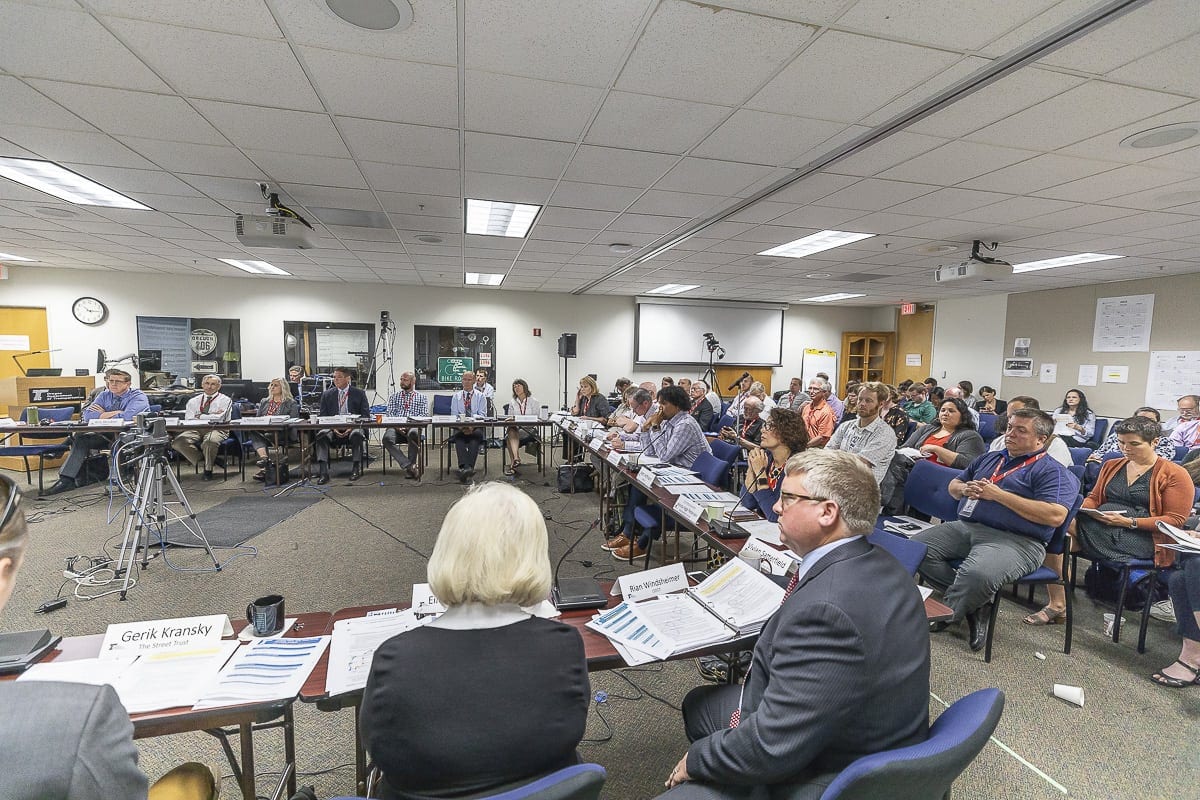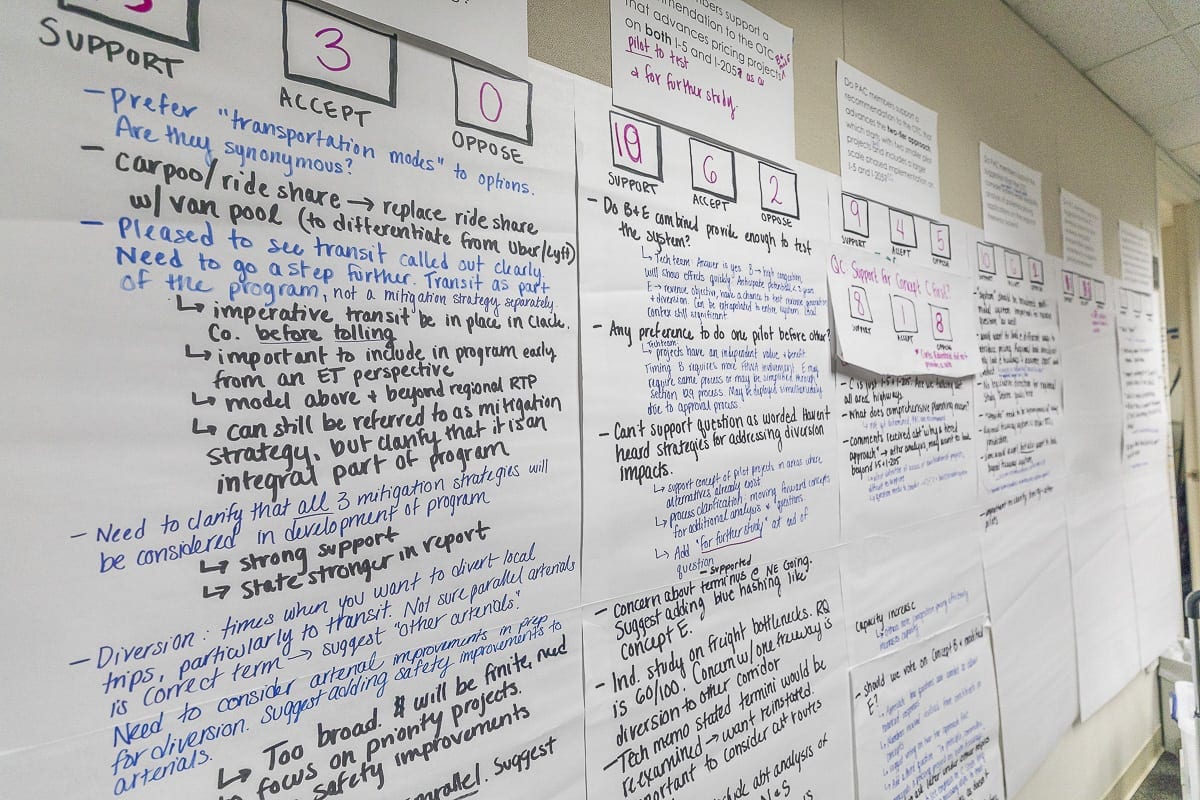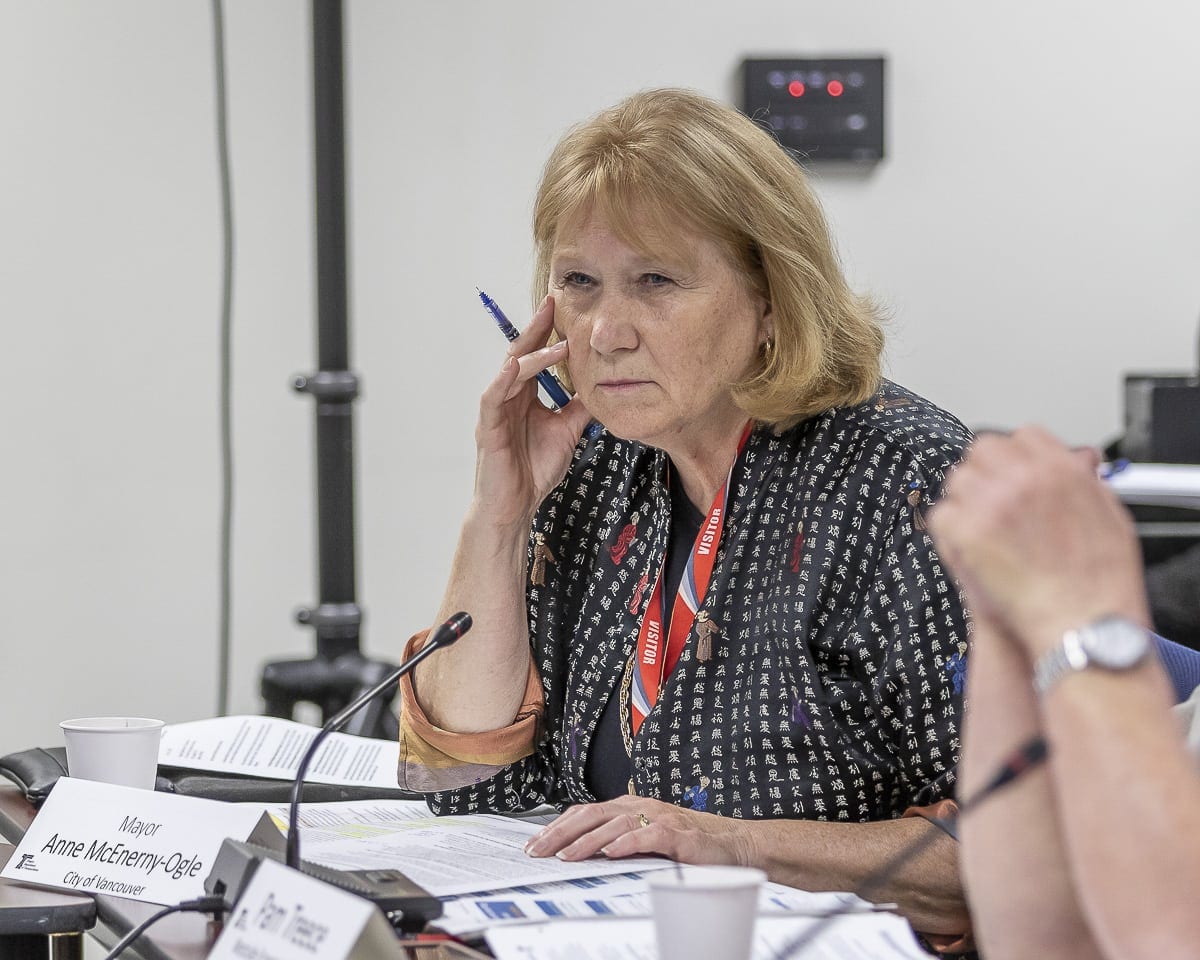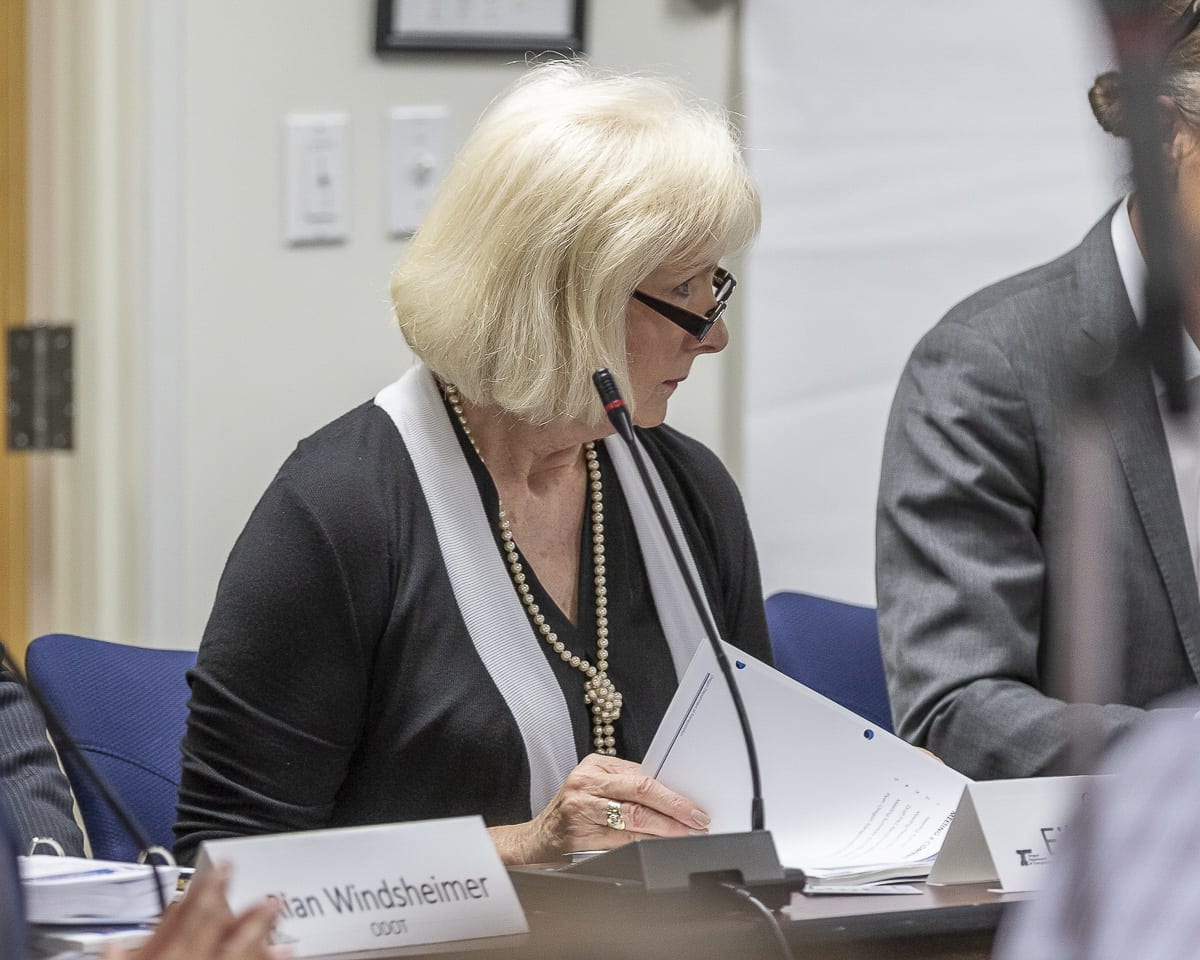The Public Advisory Committee will present its recommendations to the Oregon Transportation Commission next month
PORTLAND — It’s not the beginning of the end, it’s the end of the beginning for the process to toll I-5 and I-205 in Portland. The Value Pricing Public Advisory Committee (PAC) held its final meeting on Monday as the group works to put together a recommendation to take to the Oregon Transportation Commission (OTC). That group will be tasked with coming up with a plan to present to the Federal Highway Administration by the end of the year.

“Collectively I think we’ve learned a ton,” said OTC commissioner Sean O’Hollaren. He is one of two that sat in on the PAC meetings. “I think that we will walk into the commission knowing a very diverse frame of reference and point of view. Much better educated than when we started this process.”
Much of the discussion at Monday’s meeting centered around which of the tolling concepts the group should recommend to OTC, and in which order. Currently, the Oregon Department of Transportation (ODOT) and their consultants have zeroed in on a plan that would implement tolling on I-5 between Going Street and Multnomah Boulevard, as well as I-205 at the Abernathy Bridge, and eventually on new lanes between Highway 99E and Stafford Road. The proposal labels those as a pilot project, with the aim to eventually roll out tolling on all lanes of both freeways between the Columbia River and Tualatin.
While it’s possible that tolls on both freeways could be rolled out at the same time, ODOT cautioned that they are very different projects. The Abernathy Bridge toll would be used to pay for a new bridge, as well as the new lanes, while the I-5 toll would simply be Congestion Pricing, meant to incentivize drivers to pick alternate times to commute whenever possible. Any revenue generated from those tolls would likely go to projects throughout the region, but not necessarily that stretch of freeway. That would represent a fairly novel approach to tolling, and it’s unknown at this point how the Federal government would feel about it.
“I know that the direction we go will not solve all the problems. They will not address everybody’s concerns,” said O’Hollaren, “and we will do our best to incorporate as much as we can, but then also take a big step forward in trying to address these issues that are truly regional.”
The three-hour meeting included public testimony from 11 people, although ODOT said in a press release that 16,000 people have either attended meetings and public forums, given feedback online, or watched the live streams of the meetings. ODOT has opened a new online public comment period for people to provide feedback through July 20.

John Ley, a Camas resident who has been a stalwart against the idea of new tolls, lit into the ODOT staff members for failing to follow through on a promise to get more information about several important questions.
“Last fall, citizens and PAC members asked for detailed information about traffic diversion,” said Ley. “We were told it would come later. Here we are at the end, and later never arrived. We have no specific data.”
While earlier on in the process staff members did often say that information regarding things such as traffic diversion, pricing, and mitigation possibilities for vulnerable populations would come later, at Monday’s meeting much of that was laid at the feet of the OTC.
“So many of the questions that have been raised, including some of the ones we heard about diversion and which of the freeways would be included in a larger study, are things that can be addressed,” said Judith Gray, project manager for ODOT. “But until we find out what we’re moving forward with, once we know what there is an interest in moving forward, then we can start diving in a little bit more to refining that level of analysis.”
Commissioner O’Hollaren did share one thought on the diversion issue.
“Congestion causes diversion, right? Sitting in traffic makes people want to get off these corridors and try other routes,” he said. “One only needs to try Waze to see that there are computer programs that will encourage you to use diversion.”
What about Clark County?
There seemed to be increasing acknowledgement that the concerns of Clark County residents have been heard, even if it’s unclear how much they will play into the final plan. Several people in the room, including Gerik Kransky with the Portland Street Trust, and Matt Grumm, chief of staff to Portland Commissioner Dan Saltzman, spoke in favor of Concept C, which would toll all of I-5 and I-205, others agreed that starting more slowly would give a chance to see if things play out the way the experts were predicting.
“I still have great sympathy with our friends in Clark County,” said Washington County Commissioner Roy Rogers, who sat next to Clark County Councilor Eileen Quiring. “They have no alternatives in Concept C. And so I like the phase that we kind of see how it works before we start taxing our neighbors to the north.”
The group will likely recommend that OTC look at a slower roll-out, while also beginning a study into whether tolls on other Portland-area highways should be explored, including I-84, Highway 26, and 217. That was dubbed Concept C-plus in the meeting.
After the meeting, ClarkCountyToday.com asked Vancouver Mayor Anne McEnerny-Ogle, one of three Southwest Washington representatives on the PAC, how she felt about accusations from some of her constituents that lawmakers on her side of the river had simply allowed Oregon to move ahead with tolling, while not putting up much of a fight.

“The Oregon legislators back in 2017 already decided to toll”, the mayor says. “That is 18 months old. That’s a done deal. This body didn’t have that authority. This body wasn’t allowed to make a decision to toll or not to toll. That wasn’t an option.
“The only reason we were allowed to sit at the table is that we promised to bring their feedback,” McEnerny-Ogle added. “I think we brought their feedback. We got language into this document that talked about the impacts to our low income — our environmental justice, our diversion, our C-TRAN. Those commuters, those people who shared information about what the impacts were, we passed that right on to the Oregon Transportation Commission. That was about all we were allowed to do.”
Clark County Councilor Eileen Quiring was more subdued at Monday’s meeting than at past PAC sessions, and did not make herself available for interviews afterwards. She made it clear to ClarkCountyToday.com earlier this month that she felt the process had been driven by staff, regardless of the committee input.
“Like many government assembled committees that I have observed, unfortunately, it seems that ‘staff’ gets the lion’s share of the ‘juice’ — since they are considered the ‘professionals’ and we representatives (of groups or elected officials) or ‘citizen peons’ get a little time, but seemingly very little clout,’’ Quiring said in an e-mail. “Certainly considering the few in number from across the river (in Washington), I knew we would be very outnumbered, nevertheless I wanted to be a voice at the table.’”

Quiring says the Clark County Council re-submitted their earlier letter to OTC in opposition of tolling that impacts Southwest Washington commuters. She has also pushed the idea of allowing Washington drivers to deduct at least part of the cost of tolling from their Oregon income tax.
“Apparently, the tolls can not be directly reimbursed, but since the income taxes have no such restriction, that is how this could be done,” Quiring wrote. “This suggestion was met with a yawn, like much of the public outcry regarding this tolling scheme.’’
Sixteen lawmakers from Southwest Washington, including congresswoman Jaime Herrera Beutler, sent a letter last week urging the PAC to reject any tolling plan that would adversely impact Clark and Cowlitz County commuters. That specifically refers to Concept C, which, the letter argues “would charge Washington residents as soon as they cross into Oregon via either I-5 or l-205, on all lanes, (and) leaves them with no transportation options — their commutes will become more expensive.”
The letter raises another concern — that Oregon appears to be aiming to charge tolls, especially on I-5, of which the revenue raised would go into a general purpose fund for transportation projects “around the region”, rather than specifically to address congestion issues along that stretch of highway.
“Case law, longstanding transportation policy and precedent demands that user fees be directed to benefit those who pay the fees, and not diverted elsewhere,” the lawmakers argued. “It would be unfair for Oregon to devise a scheme to require Washington drivers to pay for transportation infrastructure that they rarely use and for efforts that won’t improve their commutes. For this reason, we remain staunchly opposed to any recommendation that resembles ‘Concept C.’”
The letter, which was signed by the entire Clark County Council, raises similar grievances to what Councilor Quiring has expressed. “While we appreciate the representation provided by the three Washington representatives on the PAC,” it reads, “the summaries of the meetings and workshops have consistently minimized or ignored the opposition growing among Washington residents.”
Next steps
While this is the final PAC meeting, the group will get one more chance to have their voice heard. The committee has until July 5 to submit its final recommendation to OTC. The commission will hold a public hearing July 12. That will likely be the last, best chance for Southwest Washington residents and policy makers to voice their concerns. By August 16 OTC will begin working with ODOT to craft a final proposal to submit to the Federal Highway Administration by the end of the year. That will likely kick off years of environmental impact reviews and Federal scrutiny.
ODOT spokesman Don Hamilton says, while it could be years before tolls become a reality on Portland-area highways, there’s little chance that some version of it doesn’t happen.
“This is very serious study that’s been done over the last six or eight months,” Hamilton says. “The Federal government will see what it needs, we’ll see what its demands are for this, and they will talk to the OTC, and a resolution be resolved, I suspect, before this is all done.”
Video courtesy OregonDOT




